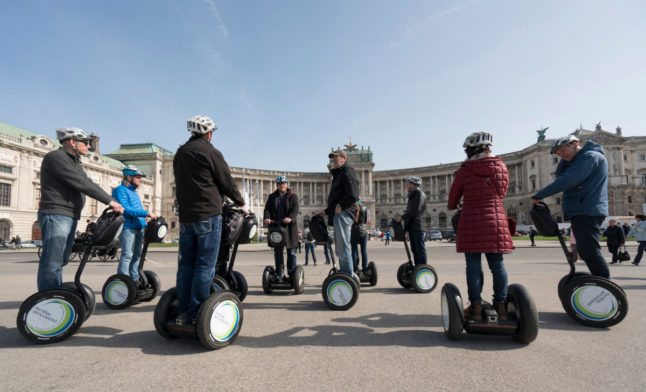Austria is recognised as the world’s most overcrowded country, with more than three tourists for every permanent resident of the country.
In some parts of Austria, the high number of tourists has become a matter of concern and has created dislike among the locals.
Fences, blocked tunnels and restaurant bans
The small-town Hallstatt of just 750 residents in Salzkammergut, sees about a million visitors per year, which is something that the locals are not always able to tolerate.
Last year, placard-waving locals blocked the tunnel into Hallstatt and also created a fence to block the views from the city, making it hard for tourists to take selfies at one of the most popular viewing spots.
Carinthia, in the south of Austria, also gained attention for tourist scepticism when a restaurant owner introduced a ‘locals only’ policy during last summer’s peak season, banning tourists from entering. He was accused of racism but defended his actions by stating that the restaurant was too busy to serve and welcome everyone.
The restaurant had also previously banned other groups of people, such as “Arabs, vegans, and hippies”, as they expressed it. During winter 2023, the restaurant announced in an Instagram story: “This is how the Peppino team is starting the new year. We would like to inform you all that our restaurant will be closed on January 16th, 2023, and will reopen on January 19th, 2023, with 6 tables reserved for our regular guests and locals”.
Ah Austrofascism alive & well, I see… #Millstatt #Kärnten pic.twitter.com/NC0K18kYFV
— Martin Shaw (@thebooksdesk) August 16, 2023
READ ALSO: MAP: Austria’s 12 World Heritage sites you have to visit at least once
Strategies to control tourism impact in Salzburg and Vienna
In larger cities such as Salzburg and Vienna, certain measures are being taken to control the impact of tourists.
Last July, Salzburg experienced its busiest month ever, with a record of 3.68 million hotel stays throughout the state. However, tourists are not always warmly in Mozart’s birth city, with reports of some locals openly swearing at tour guides in the street.
Salzburg wants to limit tourists from making shorter visits. The city’s head of tourism, Christine Schönhuber, says that Salzburg has no strategy for “quality tourism” and that “mass tourism” in the city is out of control. The tourism strategy until 2025 is under revision to prioritise overnight guests and ease the impact of day trippers, with suggestions including restrictions on souvenir shops, closing some streets to cars, and considering closing the bus terminal at the city’s Mirabellplatz to day-tripping companies.
The city of Vienna has also implemented certain measures to regulate the impact of the number of tourists. The city has stated its intention to promote alternative attractions and neighbourhoods, encouraging tourists to explore areas beyond the city centre.

New survey about attitudes towards tourism
Even if tourism acceptance in Austria is generally high, it has seen a decline, particularly in the most touristic regions of the country. The growing scepticism is influenced partly by concerns about labour shortages and environmental impact.
State secretary for tourism Susanne Kraus-Winkler from The Austrian People’s Party (ÖVP) aims to survey more than 10,000 people annually about their attitudes towards tourism.
While in tourist hotspots such as Hallstatt, local scepticism towards tourist masses is growing, elsewhere, people would like to see more visitors. Kraus-Winkler intends to improve this unbalanced tourism with an “acceptance offensive,” aiming to convince the locals of the advantages that tourism brings and to prevent frustration with tourists.
Additionally, she plans to provide regional decision-makers with a “toolbox” of solutions for addressing emerging imbalances in tourism. Moreover, a funding call is planned to support affected regions in developing concepts for their challenges. The goal is to achieve a balanced tourism in all regions.
READ NEXT: 6 great alternatives to Austria’s overcrowded tourists hotspots



 Please whitelist us to continue reading.
Please whitelist us to continue reading.
Member comments